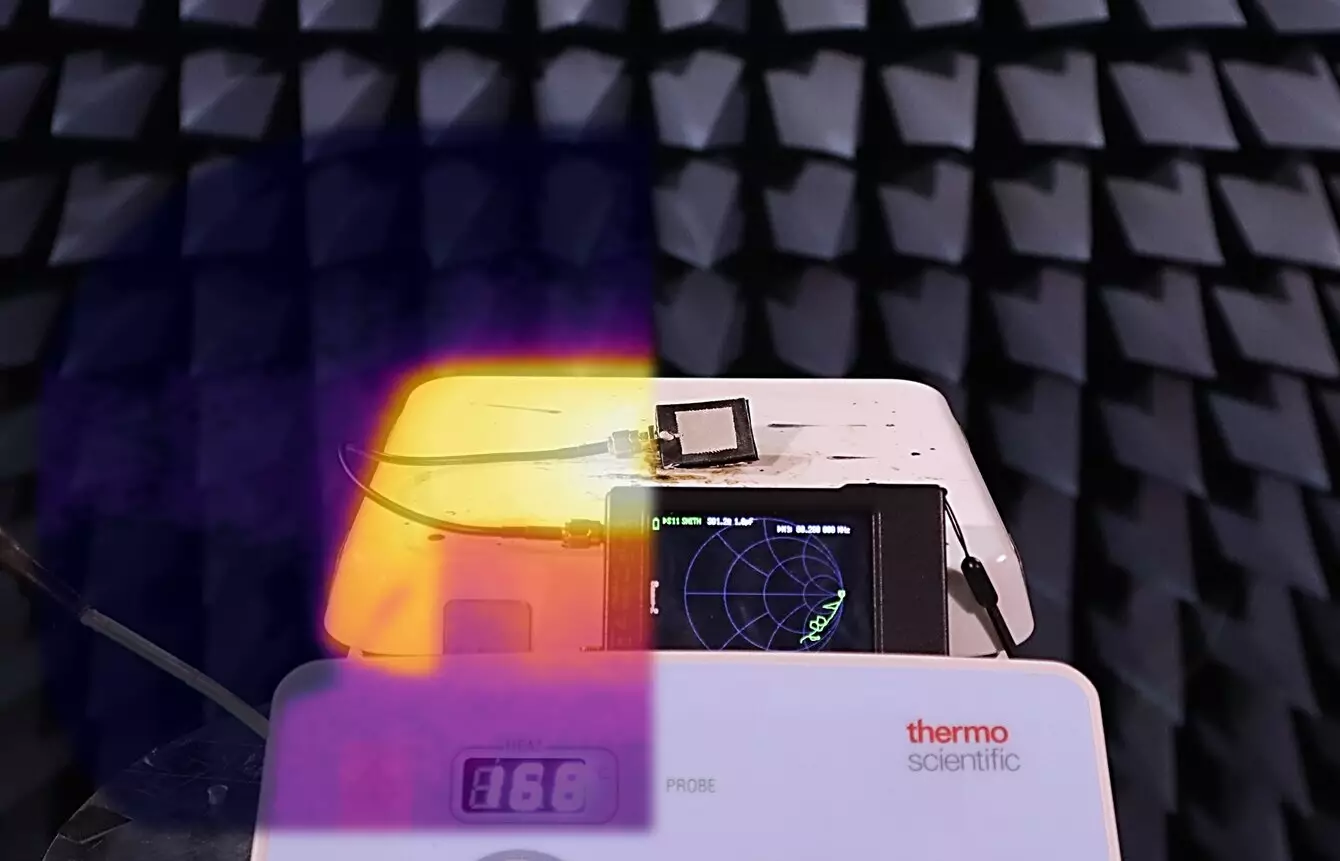Temperature sensors play a crucial role in various electronic devices, and the global market for this technology is valued at billions of dollars. However, traditional temperature sensors have limitations in terms of their narrow sensing range and the need for multiple thermistors to cover a wide temperature variation. In a groundbreaking development, engineers from UK universities have created a flexible and soft “smart skin” sensor that can measure temperature across an extensive range without the need for battery power or onboard processing. This article explores the innovative features of this new sensor and its potential impact on wireless sensing technology.
A Revolutionary Sensor for Wide Temperature Range
The team of researchers led by the University of Glasgow has revolutionized temperature sensing with their soft, flexible sensor made from carbon fibers and silicon rubber. Unlike traditional thermistors, this sensor can measure temperatures ranging from 30°C to over 200°C, surpassing existing devices in terms of the sensing range. This breakthrough has significant implications for future wireless sensors, as fewer devices will be needed to cover the same temperature range, leading to cost savings and enhanced sustainability.
The key to the sensor’s remarkable temperature-measuring capabilities lies in its ability to absorb and reflect radio-frequency (RF) signals, which change in response to atmospheric heat or cold. This unique feature allows the sensor to sense temperature across a much wider range than other devices currently available on the market. Additionally, the sensor maintains its sensitivity to temperature even after thousands of bending and stretching cycles, making it highly durable and reliable.
To achieve the desired flexibility, the researchers utilized a 3D printer to mold the soft composite material into various shapes. They successfully integrated it into components such as antennas, RFID labels, and resonators, showcasing its adaptability to different applications. The material’s ability to absorb RF radiation at temperatures up to 300°C was also verified. This versatility opens up possibilities for designing antennas over large areas that radiate signals highly sensitive to temperature changes.
Collaborators from the University of Southampton and Loughborough University played instrumental roles in this groundbreaking research. The University of Southampton supported the development of the flexible, stretchable sensor material, making it compatible with bendable electronics and smart fabrics. On the other hand, researchers from Loughborough University focused on characterizing the electrical properties of the material, demonstrating its functionality up to a frequency of 26 GHz, bridging the gap between this technology and 5G communications.
The possibilities unlocked by this new temperature sensor are vast and diverse. Beyond its immediate application in wireless sensing, the sensor holds promise in fields such as vital sign monitoring, radar sensing, satellite communications, and the future development of 6G wireless networks. With its “anisotropic” properties, which alter the material’s interaction with electric fields in different directions, the sensor can potentially be tailored further to enhance or reduce sensitivity to specific wireless signals.
Dr. Mahmoud Wagih, the UK IC Research Fellow and Lecturer at the University of Glasgow who led the study, is not stopping at this breakthrough development. He is spearheading a new research project focused on exploring the integration of functional and natively stretchable materials for body-centric wireless sensing. This next phase of research aims to harness the potential of sustainable and biodegradable wireless electronics, building on the team’s previous achievements in cutting-edge RF sensing technology.
The innovative “smart skin” temperature sensor developed by engineers from UK universities marks a significant breakthrough in wireless sensing technology. Its wide temperature range, durability, and flexibility pave the way for a new era of temperature measurement. With potential applications spanning diverse industries, this sensor opens doors to advancements in vital sign monitoring, communications, and beyond. As researchers continue to push the boundaries of innovation, the future looks bright for wireless electronics and the limitless possibilities they hold.


Leave a Reply